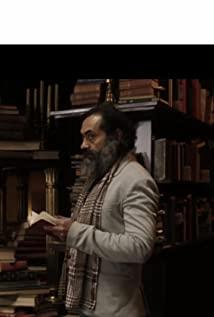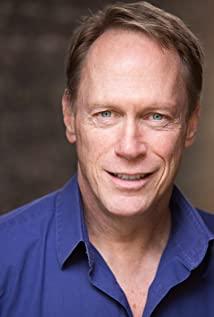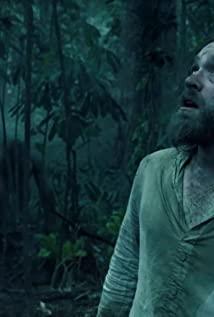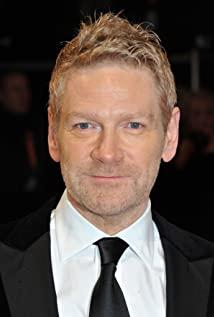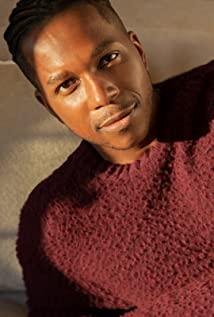When I was a child, I read very widely, the subject matter was not too picky, and the curiosity was very wide, but I also had my favorite subject, which was mystery novels. Among the mystery novels, foreign novels are relatively classic and highly readable. Among them, my personal favorite is Agatha Christie, who is known as the queen of mystery novels. Because of her advanced age, she continues to produce high-quality novels, and is also called "grandma" by readers.
Grandma's novels are all classics. For the review of this article, I chose the well-known "Murder on the Orient Express". This is a classic among Grandma's works. Many readers who have just read detective novels for the first time are If you choose this book, you must be lucky, you must be deeply sighed, and you will fall into the pit of reasoning and cannot extricate yourself.
Another very important reason for the writing opportunity is that the latest version of the film remake was released not long ago, my friends and I went to the theater to watch it immediately, and then compared the 1974 version of the old version of the first version, we just wanted to taste it carefully through the text. This classic case.
Of course, because the case is too classic, including movies, since the first edition in 1974, there have been 01 editions, 10 editions, and now 17 editions, as well as episodes, remakes in different countries, etc. Personal knowledge and writing are limited, so I will share my insights based on my own knowledge and opinions.
Murder on the Orient Express, arguably the first Christie work to be shot in a star-studded fashion, was a huge artistic and box-office success and was imitated by later detective films.
Like many of Christie's other novels, Murder on the Orient Express is based on a true event, the famous Lindbergh kidnapping in the thirties. Famous American aviator Lindbergh was the first person to fly across the Atlantic Ocean. On the night of March 1, 1932, the kidnappers kidnapped his 20-month-old son from his New Jersey mansion and demanded a ransom of $50,000. Despite the ransom, the body of Charles Lindbergh Jr. was found 11 days later in bushes not far from his home. Nanny Betty Gross and her boyfriend were investigated but later cleared. The maid, Violet Sharp, was also suspected of having a vague testimony, and she chose to kill herself instead of telling the truth. Two years later, police finally found a suspect, Haupman, a New York carpenter. Haupman, an undocumented immigrant with a criminal record and several unfavorable evidence against him, denies the charges against him, and his defense attorneys accuse police of falsifying evidence. Some believe the child died accidentally by falling out of a window, but the judge told the jury that even that didn't change the nature of the vicious murder. After 11 hours of discussion, the jury came to a unanimous conclusion: guilty. Haupman consistently refused to plead guilty, and after his appeal was dismissed, the debate on the matter continued after he was executed in April 1936.
Apparently, this blockbuster kidnapping case gave Christie inspiration, and the similarities between "Murder on the Orient Express" are obvious at a glance: the novel begins with the kidnapping and tearing of tickets of Daisy, the youngest daughter of the famous American pilot Armstrong, and a few months later, The kidnappers were captured, but the leader, Kessetti, escaped the law with the power of money. Daisy's pregnant mother died of grief, her father committed suicide, and one of the family's maids committed suicide because her innocence was suspected. A few years later, on the Orient Express from Istanbul to Calais, a man named Ratchette was stabbed twelve times to death. Poirot, one of the passengers, started an investigation. He first identified this Ratchett. It turned out that it was Cassetti who escaped the French Open. Later, he found out that almost all of the passengers in the same car had something to do with the Armstrong family. So which one of them was the murderer? Or someone else?
Movies have been adapted on the basis of novels, and each version has different characteristics, but the main line and theme are still the most important core. In the novel, 13 people planned and executed the case together. Because 2 people were husband and wife, they stabbed a knife in total, so there were twelve knife marks. Different versions of the movie will adapt some characters and content. For example, the Greek doctor in the new version of 2017 overlaps with the identity of a prisoner. The relationship of other characters remains unchanged. They can be traced back to the book. They are all motivated to murder the dead. Summary It's a planned team revenge.
The real relationship of the characters of the 12 murderers:
1. McQueen, the secretary of Ratchett (NPC), was a friend of the deceased officer's family. His father handled the kidnapping case and maintained admiration for the officer's wife.
2. Ratchett's English valet Beddos, the valet of the kidnapped girl, is also the lover of the maid who committed suicide by jumping off a building.
3. Domineering, emphasizing Mrs. Hubbard, the husband of her several husbands, the mother-in-law of the deceased officer, the wife of the officer and the mother of the countess.
4 Colonel Arbuthnot, the officer's comrade-in-arms.
5. Mary De Beham, the governess, the female secretary of the dead officer's wife.
6 Duchess Dragomirov, princess of the Tsarist royal family, godmother of the dead officer's wife.
7. Hildegard, maid of the Duchess, cook for the officer's family.
8 Diplomat Count Dereni, brother-in-law of the deceased officer, mainly with his wife.
9 The beautiful and glamorous Countess Andreni, the biological sister of the deceased officer's wife.
10 Italian driver Foscarelli, the driver of the dead officer's home.
11 Religious Swedish nurse Greta Olsson, the nanny of the dead child, is full of self-blame.
12 Pierre, the flight attendant who appeared at the beginning, the father of the suicide maid.
Among the film adaptations, the most famous is the 1974 version, which gathers godlike characters such as Ingrid Bergman, Lauren Bacall, Sean Connery, etc. Even in many subsequent films, Its rating is still the highest.
First look at the most classic 1974 first edition.
First of all, at the beginning of the film, it is to introduce the most core case of this time, the kidnapping of Armstrong's young daughter, the classic black and white tone, the harsh and terrifying sound, with the exclusive BGM rendering of that era, it is undoubtedly a suspense film at that time.
Then, the picture turns into color, and the protagonist appears, the short and fat detective we are familiar with, with an exaggerated beard, always emphasizing that he is a Belgian man, wearing a black coat, and meeting him as the person in charge of the Orient Express. A friend, because he was temporarily joining to go to London, was arranged in a carriage to Calais.
Going to Turkey, which straddles the Eurasian continent, the scenery along the way is really worthy of being a charming capital. The scenes described by Grandma in the novel, when the film is turned into a flat animation, seems to really be able to appreciate the customs of various countries.
At this time, people from all walks of life went online one after another, and I thought it was the most beautiful foreshadowing in catching up with the car. The governess Marie hurried up and met another accomplice, and the two of them whispered together and were overheard by Poirot; when the beautiful and cold Duchess appeared together with her husband, it was the most eye-catching moment on the road; With a maid, a housekeeper and two pet dogs, they boarded the car in a grand manner; there were also colonels, doctors, and women of different skin colors, who seemed to be ordinary colonels, doctors, and women from all over the world. , of course, in the end our NPC, Ratchett, a business tycoon from the United States, with a heavy American accent and an unkind face, also got on this car of revenge exclusively for him.
The first day at the beginning is the best time for you and me to plan and observe others. During the period, Poirot greeted many people. For example, Ratchett asked the famous Poirot detective to find the murderer and hope to protect him because he said that he received a threatening letter. Poirot was most interested, but unfortunately Poirot was a person who was comfortable and had his own arrangements, so he politely refused. At night, it is also the time when the most important murders take place.
From midnight, Poirot was constantly awakened by the sound of the next door in his car (he shared one with the others). This is the prelude to the revenge case. The next door happens to be the room of the deceased Mr. Ratchett. The first time the door was opened was when the flight attendant asked if he needed help. The second time he opened the door, he saw a woman wearing a yukata leaving the corridor. Of course there was a small man in ill-fitting flight attendant clothing running by, and it was 1:15 when the series waited.
By the time the flight attendant Pierre knocked on the door the next day, the deceased had been stabbed 12 times and lay peacefully on the bed.
In the novel, it is Detective Poirot and his friend, the captain of the car, who are not suspected of being related, as well as the doctor who assists in handling the case. Thirteen other people from the same carriage are interrogated. Many book fans and viewers who have watched the movie feel that Poirot does not have so much evidence to support him in solving the case, and even the truth at the end is inexplicable.
Personally, I don't think so. The case was naturally ambushed from the very beginning, and many details are clues. Here I will focus on the clues of my new movie.
1. Walking, which means the movement of people starting in the early morning. We know that Poirot has been disturbed. We know that at 1:15am, he has not fallen asleep. At this time, there are strangers and movements in the corridor, which make him mistakenly believe that this is the time of the crime. Do alibi walks. We think that since the murderer sneaked into the deceased's carriage to murder him, it is impossible to pretend to be so mysterious and make such a big noise, so this is the first trap to misunderstand Poirot.
2. Rhetoric is an interrogation of routines and lies. This is really exciting. In order to escape suspicion, the mind of ordinary people will tell the detective all the truth, so that he can have a basis for judgment, but unfortunately the entire carriage is a gang of murderers, and they unanimously choose to lie , giving false testimony. (This is also the reason why Poirot deduced wrongly at the beginning. Based on his Catholic devout belief, he analyzed the truth of the first incident, but it was also a big lie).
Of course, in this interrogation process, everyone made mistakes, which was also considered to be the biggest breakthrough and clue for Poirot, because in the process, Poirot discovered that each of them was related to the most famous Armstrong kidnapping incident that year.
For example: Mary, a governess who has never been to the United States, inadvertently utters the words that are specific to the United States, and Ms. Greta Olsson, who believes in God and is timid, is very nervous about supporting and educating children.
3. The situation in which the deceased was stabbed. The deceased was a strong middle-aged American man with a gun, and he had received many threatening letters. Why was he stabbed 12 times on the bed. The key is to talk to the drama doctor. The strength of these 12 cuts varies in depth. Of the 5 deep cuts, 3 of them are fatal, and there are 2 very shallow wounds. These are not caused by one person.
4. The deceased was armed with a gun before his death, and he also appeared when he coerced Poirot to help investigate the incident. So Poirot knew that there would be a gun under his bed. The problem was that the gun was not used, which means that the murderer did not fight the deceased, took medicine to make him unconscious, and stabbed him 12 times in a row.
5. Table, which is time. More than one scene in the movie illustrates this. In fact, I personally think it is intentional to confuse the time of the crime, including when the watch is smashed, the display time is exactly 1:15, as if it was intentionally telling the time, but in fact this is not true. crime time.
6. Burnt paper. This piece of paper was later restored by Poirot, and the letters displayed on it pointed to the Armstrong case, which also directly let Poirot know that the deceased was the prisoner who was kidnapped at that time.
7. Handkerchief with letter "H". At first everyone guessed the initials and offered to search everyone's passport. (Western country passports are equivalent to their ID cards). Unfortunately, it did not match until it was discovered that Countess Andreni had deliberately changed her initials. This looks suspicious again. In fact, this is everyone taking care of each other. Because it is the lady's handkerchief, in Spanish "N" = "H".
8. Cabin crew clothing and its buttons. This seems to be the location of the transfer of stolen goods, and the top is found in the old lady's maid's box, which is also one of the tricks. The button was Mrs. Hubbard's initiative to say that a man was staying in his car at night.
9. Murder weapon, dagger. This is also a bit silver-free here. The murder weapon was also found by Mrs. Hubbard in her cosmetic bag. She should have made the murder weapon. Someone deliberately put it in her bag and ran away. She found that the murder weapon had nowhere to escape, so she provided it directly.
10. Bathrobes. At midnight a woman in a yukata passed by in the carriage, which was later found in Poirot's own trunk. He thought it was a provocation for him. But later, it was confirmed that he was completely wrong.
These are the clues that Poirot could find on the spot, or before the police forensics waited on the car to search for evidence, we carefully cooperated with 5-8, and knew that this was a joint arrangement by the gang to actively cause such killings. Going back to the beginning, Poirot occasionally got on the train to join this carriage, which disrupted their plans to some extent, and had to do something later (Mrs. Hubbard was stabbed, and the murder weapon was discovered voluntarily, Secretary's identity,) for everyone to escape suspicion.
After the dead died, they were trapped under the mountains in Turkey by the wind and snow. At this time, once he set off and arrived at the station, he must immediately request search support, and more evidence and the truth will surface at that time.
Relying on his previous experience and rigorous logic, after sorting out the clues, he will come up with many questions, and in the final interrogation and revealing the truth, he shouted angrily: Why are there so many clues? Why is there such an obvious timing, a murder weapon, and even such a perfect alibi for everyone? Why did you all think that you had deceived yourself during the interrogation? Why did everyone have something to do with the case back then?
Just because every one of you is lying! Because you are all murderers!
Yes, there are too many clues, the evidence is too obvious, the absence is too perfect, and the testimony is too airtight.
But once integrated, it is not right.
Poirot could have deduced the shocking and planned murder.
The meaning of 12 can be said to be a point throughout the text.
European and American court trials are conducted by a jury system, and a jury consists of 12 members. The 12 members who symbolized justice did not solve the tragedy at that time, but innocently let 5 lives go away innocently. The deceased could not rest in peace, and the 12 people who were still alive and implicated were immersed in grief and hatred for a long time.
These 12 people were organized and planned by their close relative at the time, the grandmother of the kidnapped young daughter Daisy. They wrote the threatening letters one by one in different handwriting, approached the real murderer one by one in different identities, and stayed in this compartment together.
Therefore, there are 12 knives for venting hatred, and each age, gender, and different person brings 12 knives with different strengths.
I have to say, whether it is a novel or a movie, some details are handled very well. The unique makeup and dress of that era, the language and dialect that each character casually spoke, Poirot's exaggerated performance and profound reasoning process, finally revealed the truth.
Poirot said two choices, and let the driver's friend who saw it all choose, and he chose to hide the truth, so that the case that could not get justice in the past was prosecuted later.
At last Poirot left the carriage.
The 12 "murderers" toasted each other and celebrated each other, which became the biggest highlight of the whole film. It was a kind of clinking congratulations in turn shouting "peace". When we don't know how to judge, maybe the film will tell you a way.
Not so-called fairness will get you a real defense.
But late justice always comes in some form.
Shot in 1974, the 1974 film featured a slew of established stars or up and coming newcomers, including at least six Oscar winners. Albert Finney, who plays Poirot, is a veteran actor active in both the UK and the US. The characters of the old version may be brought to life, so that everyone remembers this famous novel, this famous case, it will be like this.
The new Murder on the Orient Express lineup is still staggering, with Johnny Depp, Judi Dench, Michelle Pfeiffer, Penelope Cruz and more. But starring Poirot is the film's director, Kenneth Branagh.
The new version of Poirot may be reflected in the sense of ritual. I don't know if it was influenced by the director's perspective, but in the shaping of the protagonist. This shows that at the beginning, the case in Jerusalem was dealt with, and when it was finally mentioned in Egypt, he felt that it was over. Maybe this will bring a little excitement to fans (like me), but it doesn't feel like Poirot should do it, because he was lazy and intended to take a vacation, and when he got off the car for no reason, the London plan was also put on hold, But inexplicably came to Egypt? ?
Of course, this is just a little bit different. The new version is very interesting because I just watched it with my friends.
My friends who traveled with me have not read any related novels and movies, but they were pulled by me. The first feeling after reading it was that it was shocking and frightening.
emmmmm, I'm wondering why?
Then I thought about it, because it is a feature of the new version.
In the new version, the role of the doctor is overlapped with a murderer (friend of the colonel), the diplomat Count Andreni becomes a grumpy dancer, Pierre becomes the lover of an innocent dead maid, the secretary Mai Quinn has become the son of a defense attorney, and these roles have changed, but the overall thread remains the same.
In the role of Rachel, Depp plays a bit fierce, reflecting a ruthless character who has been in the arena for many years. This murder, in the new version, emphasizes the leader, that is, Daisy's grandmother Linda Arden, and the most distinctive character in the car at the beginning happened to be Mrs. Hubbard. Interestingly, the dialogue between Mrs. Hubbard and Ratchett when they met in the carriage was full of deep meaning and emotion. At this time, the film laid the groundwork.
Of course, my friend was afraid because the scene in which everyone stabbed the dead at the end was the thrill and trembling of revenge, which made this scene black and white, silent, and so terrifying.
Regarding the remake of the new version, there is still a lot of controversy between positive and negative reviews. Here I recommend a tweet for everyone to check out.
http://mp.weixin.qq.com/s/lpzk6zLxzSTa-cIAt3Ee6w is
a remake after seven years, and the new version of "Oriental" has been fully upgraded in technology.
Under the rendering of CGI, Istanbul in the movie is really exotic.
The scenery of the snow country on the way, there is really a Hongdae scene of an avalanche.
---A
good work of poison tongue movie , it is worthy of being remade. The remakes should be compared, but not criticized.
There are also many small details, including the intimidation letter that different people paste the letters of the newspaper into the content of the letter, and the addition of an episode written and directed by Linda Arden who was stabbed and so on.
A big detail that the plot finally adds to the original is
In the last wind and snow, the train was about to leave, and everyone was waiting for the pomp to announce the truth.
I said that in unison with my friend, the Last Supper.
Finally, after a hissing announcement of the truth (the new version did not tell the background of the incident, but chose to slowly export it when Poirot himself announced the truth), the whole case came to light. His hair was messy, his beard was deformed, and he was full of anger and shock. He had just been fighting with others, and he knew that the next moment, it would be his choice with a group of people.
After Poirot said two possibilities, he took out his gun and put it on the table, now your only option is to kill me and throw me into the ice lake. Then Daisy's grandmother, Linda Arden, grabbed the gun and... committed suicide.
As a result, there was no bullet in the gun.
The original book just said two choices, let my friends choose, and my friends chose the second.
A test given by Poirot to 12 murderers.
Of course, my favorite part of the new version is that after telling the truth, Poirot finally felt that he could respond to Armstrong's reply, which was the most tender part.
Although the reply to me was very similar to the CET-6 listening (forgive me...), the
fluent, clear and sincere speech brought tears to my eyes and was probably the most moving part of the whole film.
To be honest, the new version of Poirot does not correspond very much to the novel, but rather has a variety of warmth and inherent sensibility. In the beginning, his obsessive-compulsive disorder, his nitpicking, reflected his personal ideals and logic, and in the middle, did you find that Poirot still had a lover? ? (The novel will not arrange the role of a pineapple girlfriend), he has always been brooding about the commission of the colonel back then, and finally it is a response. He trusts in human nature, and he pursues justice, but where should the balance be in favor of justice here?
In the end, we come back to reality.
In 1929, my grandmother was living after her first marriage. In order to relax her mind, she followed a friend's suggestion and took the Orient Express to Turkey. She did stop for nearly 6 days due to the wind and snow on the way. This is an opportunity. It is rare that Grandma combined this event and inspiration to achieve this work.
During the filming of the first version of the film, the Orient Express did not actually exist. The Orient Express used in the movie doesn't go very far. Only some of the train frames are still in museums, and most are in Belgium.
Interestingly, 84-year-old Agatha Christie attended the premiere of the film. It was the only film adaptation of her life that she was completely satisfied with. In addition, she also believes that Albert Finney is the closest to her Poirot image. She died about a year after the film was released (1890-1976).
It's been a week since I watched this movie before I knew it. I wrote more than 6,000 words of my review this week, but I still feel that the analysis is not enough, the thinking is not deep enough, and many things have not yet been penetrated, especially the final sublimation. Maybe not from a judicial perspective, a human nature perspective, etc., but what I thought of was that this was Poirot's (grandmother's) idea from the very beginning. Grandma herself worked as a nurse in many countries during the war, and witnessed many partings. Perhaps this is another theme, another way of thinking about all things.
There are too many things in the world, and there is never a guarantee that every choice is right.
Tribute to my favorite Agatha Christie
View more about Murder on the Orient Express reviews







